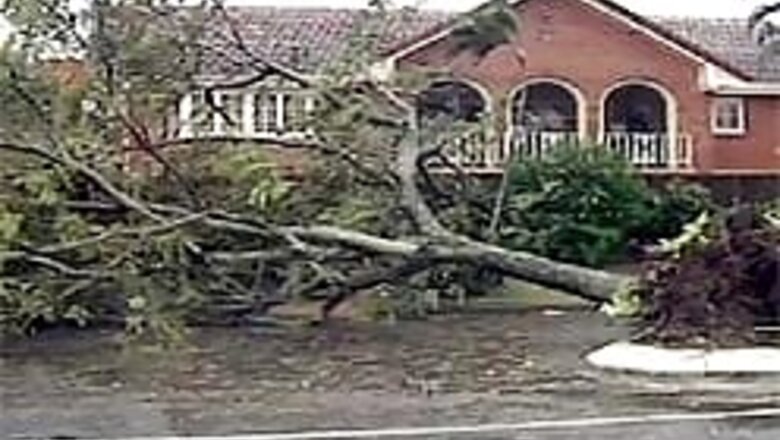
views
Sydney: Tropical Cyclone Larry has slammed into the northeastern coast of Australia on Monday with gusts up to 300 km per hour, authorities in the Australian state of Queensland report.
The eye of the category five storm passed over the beach resort of Innisfail, in the Australian state of Queensland, about 7:30 am (8:30 pm GMT, Sunday), and was soon downgraded to a still-powerful category four, according to Australia's Bureau of Meteorology.
Top sustained winds at landfall were at 190 km/h, but gusts up to 300 km/h were reported, Craig Burke, a forecaster at the airport in Cairns, about 90 km north of Innisfail.
"The reports that we've been receiving through the morning have been quite devastating, actually, with lots of roof and structural damage throughout the community," Burke said.
Widespread power outages were reported as well, he said.
Mandatory evacuation orders were issued ahead of the storm, and most residents moved to safety 'well in advance', said Katheryn Ryan, a spokesperson for Queensland's State Emergency Services office.
Emergency crews reached the area late Monday morning and began assessing the damage, Ryan said.
She said only minor injuries had been reported.
The storm has also devastated the region's multimillion-dollar banana and sugar farming industry, a local official said.
Deputy Mayor George Pervan of Johnstone Shire Council said the cyclone ruined sugar cane and banana crops.
"The crops are all gone, bananas are all flattened, cane's flattened. It'll kill us for 12 or 18 months," Pervan said.
At noon Monday, (1 am GMT), the Australian Bureau of Meteorology reported the storm was a Category 3 cyclone with top winds of 180 km/h.
It was centered about 100 km west of Innisfail, moving to the west at 25 to 30 km/h. Despite the weakening, Larry still packed gusts of up to 220 km/h, forecasters reported.
Australian Prime Minister John Howard told reporters he had been in touch with state leaders and promised 'any help that is needed from the federal level'.
"They may need helicopters, for example," he said. "They may need water-purification equipment, depending on the extent of the damage."
Innisfail, a beach town of about 8,000, is a popular departure point for boaters and divers seeking to explore the Great Barrier Reef.
The sounds of metal and lumber being torn from structures could be heard above the winds as the cyclone passed, journalist Phil Willmington told CNN.
"There's just devastation everywhere in this coastal community," he said.
A motel proprietor told Australia's Sky News TV that residents of Innisfail ventured out as the calm of the eye of the storm passed over the town.
She said the town looked as if a bomb had hit it with trees uprooted and tin and roofing material scattered everywhere.
Townsfolk then retreated back indoors as the winds and rains returned.
The storm struck land near low tide at Innisfail, resulting in a storm surge of just 20 cm, Burke said. But he said communities to the south could face higher tidal surges as the storm nears, perhaps as high as 4 metres.
The swath of destructive winds stretched from the coastal towns of Ingham, to the south of Innisfail, and Port Douglas, to the north, the Meteorology Bureau reported.
National flag carrier Qantas canceled a scheduled morning flight to Cairns and another to Townsville -- the two largest cities in the cyclone's path, AP reported. Cairns has a population of 125,000 while Townsville is home to 160,000 people.
Queensland state premier Peter Beattie declared a disaster situation, giving local governments the power to enforce mandatory evacuations.

















Comments
0 comment